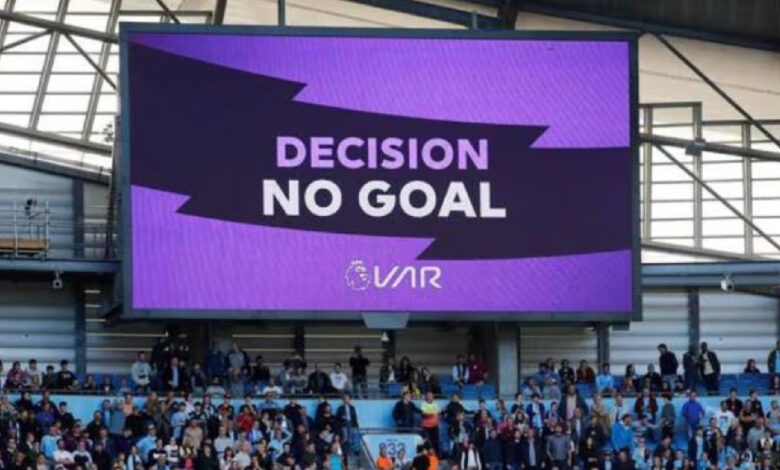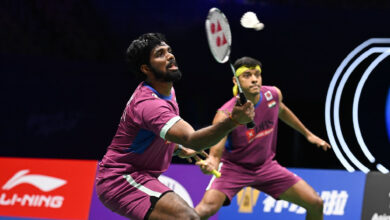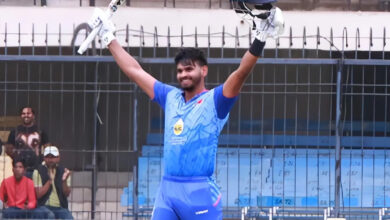What new VAR promises? Fewer breaks, lesser soft penalties and you also get to hear referee | Football News

The VAR was designed to end all potential turf wars. Yet, five seasons since its inception, EPL’s technological foray has only spurred controversies and sparked debates. It survived a scrap-campaign, with 77 per cent of the votes favouring the technology. A revision though was inevitable, so the Premier League launched a six-point plan to fine-tune VAR—highlights being a high threshold of VAR’s intervention including the “referee’s call”, interpretation of handballs inside the box, holding shirts in the box and effective communication of the decision to the spectators—so that the decision-making mechanism is smoother, transparent and the game’s flow uninterrupted.
What is the referee’s call?
In practice, it is different from the umpire’s call in cricket, wherein the television umpire sticks with the umpire’s decision upon review. But in spirit, both emphasise the primacy of the referee’s (umpire’s) judgement. VAR, thus, would interfere only if the error is clear and obvious. Like if the referee had missed a dangerous tackle, or if the linesman had missed a clear offside or such-like blatant oversights. If the officials handling VAR believe the referee has conclusively erred, based on readily available evidence, it would inform the referee, who would watch full-speed replays on the pitch-side monitor.
Slow motion frames would be shown only if the point of contact, for instance a handball or a tackle, needs to be verified. One of the biggest drawbacks of VAR has been that the slow-motion replays made the challenges look worse on the monitor, thus influencing the eventual decision. It has resulted in soft penalties and harsh offsides calls. With fewer slow motion replays such instances too could dwindle. The VAR would also not instruct him to change the decision—the final call would be the referee’s.
What does it imply?
It promises fewer breaks. The VAR officials would not brood on every decision for an eternity, thus disrupting the game’s tempo, and making teams build momentum again. It would reduce the instances of footballers appealing to the referee for VAR for trivial matters. The brief has been to speed up decision making—the emphasis being if a decision can’t be made in the first few viewings, no conclusive evidence can be reached.
Moreover, 12 new special video assant referees have been added to ensure a quicker verdict and provided specialised training. “Emphasis is on speed of process while preserving accuracy,” the Professional Game Match Officials Board had asserted. The semi-automated offside technology, which would be implemented after one of the autumn international breaks, would further reduce the breaks in play ( at least 31 seconds). It would also unburden the referees, some of whom had complained that the relentless eye of the VAR had put them under extra pressure, thus affecting the quality of decision-making.
Would this season see fewer penalties?
The number of penalties awarded have not actually skyrocketed after the introduction of VAR. After a high of 125 in the first year of VAR, it dropped to 106 last season (the same number as in 2016-17 pre-VAR season). Yet, there were plenty of soft penalties, especially awarded for handballs inside the box. But a relaxed handball rule could see fewer spot kicks being given for hand balls, the interpretation of which has been complicated for ages. There, though, is a genuine attempt to simplify it. Last year, referees awarded penalties whenever it hit the arm, unless it was from a point-blank range.Now they would consider if the arm was in a justifiable position or making a justifiable movement. For example, if the ball hits the supporting arm of a player when he is trying to balance himself when falling on the ground, or when it has deflected wickedly from his own body or another player. to hit him arm and he had little time to react. The proximity of the player to the ball too would be evaluated. Players have been advised that they do not need to keep their arms unnaturally behind their backs to avoid being penalised.
What is the new interpretation of holding inside the box?
It is the commonest sight when taking corners, players locked in bear-hug, pulling and tugging shirts, often wrestling the other down. Ahead of this campaign, referees were told to bear in mind how far the incident is away from the ball. Players will only be penalised when holding is sustained and has a clear impact on the opponent’s opportunity to play or challenge for the ball, including non-footballing actions.
Former referee Kevin Friend, who gave the new guidance to the referees, explained to Sky Sports: “If the defenders’ actions are to deliberately bring the player down holding him, sustained, impactful, then we’re going to penalise that. The more away from the ball, the more severe it’s got to be.”
Would we see fewer refereeing controversies this year?
Not necessarily. Though some of the rules have been relaxed and some made stringent, controversies would invariably strike because many of the rules in football are still bound to interpretation and subjective. What might look like a deliberate handball to one referee might not necessarily look the same for the other. It would depend on the mood of the match, and the angle from which the referee had watched the action too.
How would the VAR experience be for in-stadia fans?
The screens would show all VAR overturns and the on-field goals that are disallowed. There is also a new Premier League Match Centre social-media account that will communicate the facts regarding VAR decisions, besides announcements. However, this would not be live, but after the check has ended.







